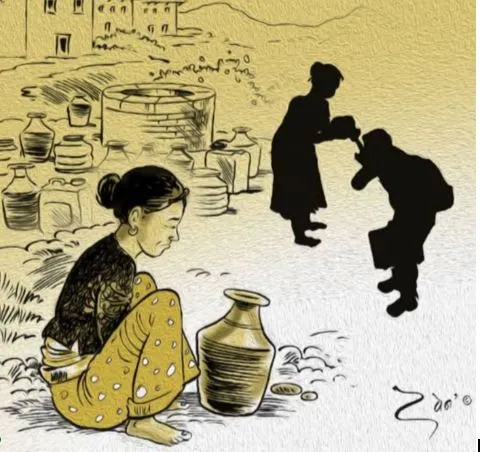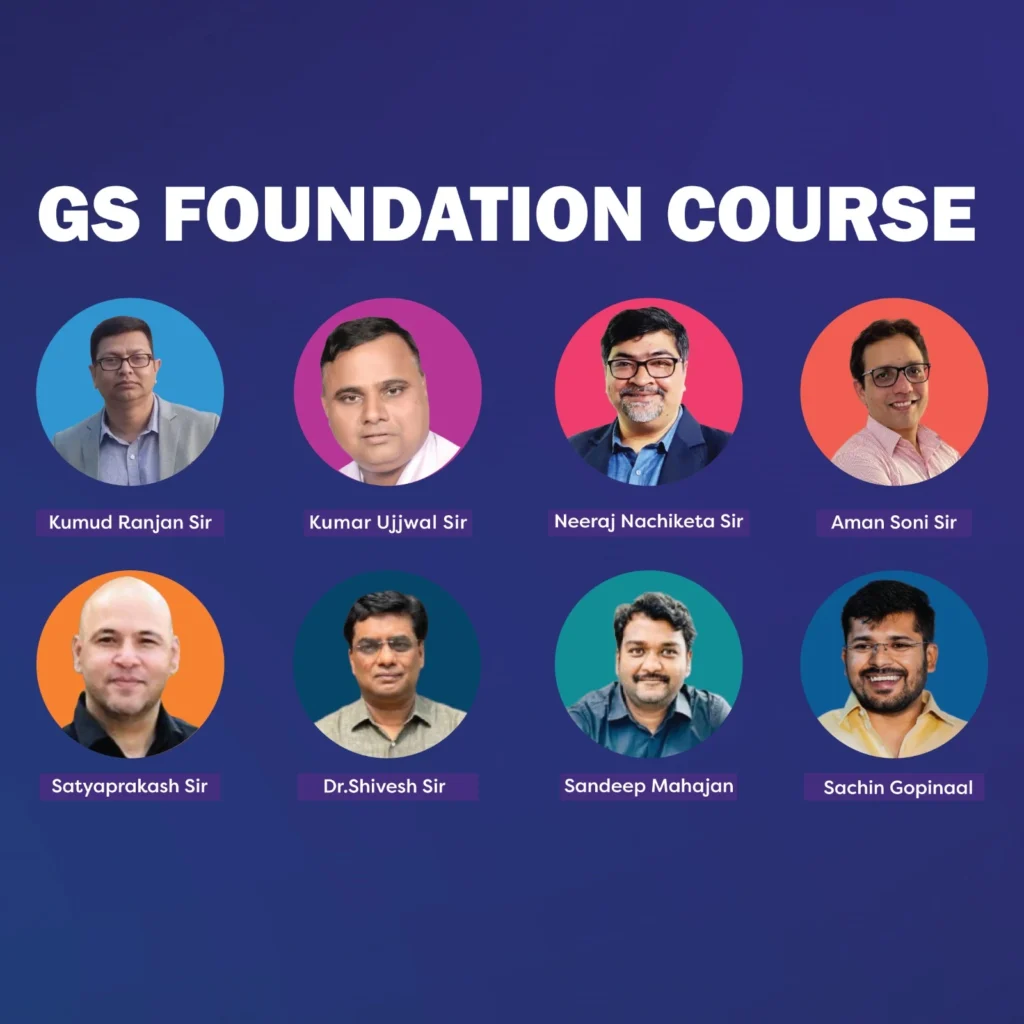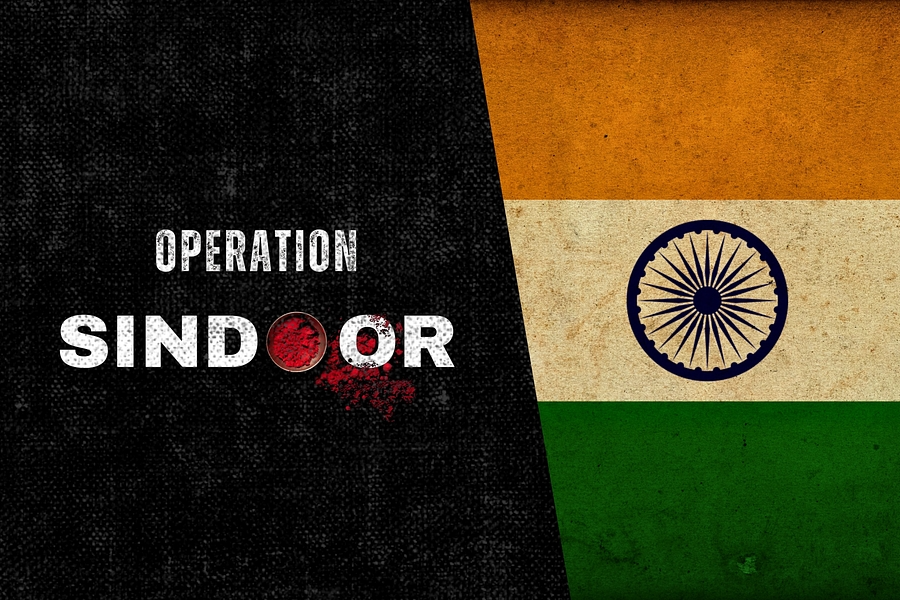Untouchability: Its Forms, Implications, Government Measures, and a Way Forward
Relevance : Sociology Paper 2: Caste System- Untouchability- forms and perspectives.

Untouchability is a social practice that places certain groups, particularly Dalits, at the lowest rung of India’s caste hierarchy. Rooted in the notions of ritual purity and pollution, it manifests as systematic exclusion, oppression, and denial of basic rights. Despite constitutional abolition under Article 17, untouchability continues in various forms, ranging from social exclusion to economic deprivation and physical violence. Recent incidents, such as the assault on a Scheduled Caste engineer in Ballia, Uttar Pradesh, highlight that caste prejudice persists and shapes both social interactions and economic opportunities.
Sociologically, untouchability can be studied through multiple lenses: as a cultural norm (ritual-based), as a structural mechanism to maintain inequality, and as a source of social conflict. Understanding its persistence is critical for designing interventions that promote equality and social justice.
Thinkers’ Views on Untouchability
B.R. Ambedkar
- Defined untouchability as “the badge of social inferiority imposed by dominant castes to control and oppress Dalits.”
- He emphasized that untouchability is not merely ritualistic but also political and economic, used to deny Dalits access to resources, employment, and power.
- Defined untouchability as “the badge of social inferiority imposed by dominant castes to control and oppress Dalits.”
G.S. Ghurye
- Viewed untouchability as “a practice by which a section of people is segregated and considered ritually impure, restricting their social and occupational mobility.”
- He highlighted the cultural and ritualistic dimensions, showing how religious justifications reinforced social exclusion.
- Viewed untouchability as “a practice by which a section of people is segregated and considered ritually impure, restricting their social and occupational mobility.”
M.N. Srinivas
- Introduced the concept of dominant caste and emphasized that untouchability functions as a structural mechanism maintaining social distance.
- Showed that social hierarchy is maintained not just through laws but through everyday practices and social interactions.
- Introduced the concept of dominant caste and emphasized that untouchability functions as a structural mechanism maintaining social distance.
Andre Beteille
- Considered untouchability as a form of social inequality, linking it to patterns of economic deprivation and generational disadvantage.
- Highlighted how caste and class intersect to reproduce social stratification.
- Considered untouchability as a form of social inequality, linking it to patterns of economic deprivation and generational disadvantage.
Louis Dumont
- From a structural-functional perspective, he saw untouchability as embedded in the hierarchical caste system, where ritual purity defines social ranking.
- Emphasized that ideology often justifies social inequality, masking exploitation under the guise of tradition.
- From a structural-functional perspective, he saw untouchability as embedded in the hierarchical caste system, where ritual purity defines social ranking.
Forms of Untouchability
Social Exclusion
- Dalits are historically barred from temples, schools, public wells, and community events.
- Functionalist View: Ritual rules were thought to maintain social cohesion by clearly demarcating boundaries between groups.
- Conflict Perspective (Ambedkar): Exclusion is a tool of oppression, reinforcing power dynamics and limiting upward mobility.
- Example: Many villages in India still report segregated water sources and temple entry restrictions for Dalits.
Economic Discrimination
- Dalits often perform menial or low-paying jobs considered “impure,” such as sanitation work, leatherwork, or manual scavenging.
- Marxist Perspective: This is an example of class exploitation intertwined with caste, ensuring the dominant groups retain economic control.
- Weberian Analysis: Caste status restricts access to land, resources, and opportunities, perpetuating socio-economic inequality.
Political Marginalization
- Despite constitutional reservations, Dalits frequently face intimidation, limiting their participation in local governance.
- Conflict Theory: Dominant castes maintain political control, preventing marginalized groups from influencing policy and resource allocation.
- Example: Dalit representatives in Panchayati Raj institutions are sometimes sidelined from decision-making.
Cultural Suppression
- Exclusion from festivals, rituals, and traditional arts erodes identity and reinforces social inferiority.
- Symbolic Interactionism: Cultural symbols and rituals communicate social status; denial of participation reinforces notions of impurity.
- Example: Dalit art forms like folk songs or dances were historically marginalized or appropriated by dominant castes.
Violence and Harassment
- Physical assaults, verbal abuse, and intimidation maintain caste hierarchy.
- Conflict Lens: Violence functions as a mechanism to enforce social subordination.
- Example: Recent reports in UP, Bihar, and Rajasthan show caste-based violence during disputes over land, education, or temple entry.
Implications of Untouchability
Socio-Economic Impact
- Exclusion from education and formal employment perpetuates poverty.
- Beteille & Marxist Lens: Untouchability reproduces structural inequality across generations, preventing upward social mobility.
- Example: Dalits historically underrepresented in professional and managerial occupations.
- Exclusion from education and formal employment perpetuates poverty.
Psychological Impact
- Experiencing discrimination leads to low self-esteem, alienation, and stress.
- Symbolic Interactionism: Social interactions communicate inferiority, shaping self-perception and identity.
- Example: Dalit children in segregated schools internalize a sense of social inferiority.
- Experiencing discrimination leads to low self-esteem, alienation, and stress.
Impact on Social Cohesion
- Social tension, resentment, and inter-caste conflicts arise due to inequality.
- Conflict Theory: Social stratification generates friction, undermining overall social harmony.
- Example: Violence during caste disputes over land or political representation disrupts community life.
- Social tension, resentment, and inter-caste conflicts arise due to inequality.
Changing Forms of Untouchability
Traditional Forms
Ritualistic Exclusion: Dalits were barred from temples, village councils, and religious ceremonies.
Segregation in Daily Life: Denial of access to common wells, schools, roads, or seating arrangements in public spaces.
Occupational Segregation: Restricted to “unclean” or menial jobs like manual scavenging, leatherwork, or cleaning.
Social Stigma: Denied social interactions such as marriage, dining, or friendship with upper castes.
Modern/Contemporary Forms
Educational Discrimination: Despite laws, Dalits face harassment, bias, and exclusion in schools, colleges, and coaching centers.
Workplace Discrimination: In private and public sectors, subtle bias, denial of promotions, or wage discrimination persists.
Residential Segregation: Even in urban areas, Dalits may be restricted to specific neighborhoods or informal settlements.
Digital and Social Media Exclusion: Online harassment, caste-based trolling, and discriminatory behavior in digital spaces are emerging forms of untouchability.
- Political and Institutional Marginalization: Representation exists on paper, but Dalits often face intimidation or lack of real decision-making power in governance.
Sociological Analysis of Changing Forms
Symbolic Interactionism: Modern untouchability often manifests in micro-level interactions, where subtle cues, language, and social behavior communicate inferiority.
Conflict Perspective: Structural inequalities persist in education, employment, and politics, reinforcing dominance of upper castes.
Functionalist Lens: Even though laws aim to restore balance, latent social norms and prejudices perpetuate subtle forms of exclusion.
Example
Urban Dalit students in elite institutions may face social isolation or discriminatory groupings in hostels and classrooms.
In corporate spaces, Dalit employees sometimes experience subtle bias in promotions, project allocation, or workplace culture.
Government Measures
- Constitutional Provisions
- Article 17: Abolishes untouchability.
- Articles 15 & 46: Promote affirmative action in education, employment, and social protection.
- Structural Functionalist View: Legal measures attempt to restore social balance and promote inclusion.
- Article 17: Abolishes untouchability.
- Legislative Framework
- SC/ST (Prevention of Atrocities) Act, 1989: Criminalizes caste-based discrimination and violence.
- Conflict Lens: Provides marginalized groups a mechanism to challenge entrenched power structures.
- SC/ST (Prevention of Atrocities) Act, 1989: Criminalizes caste-based discrimination and violence.
- Educational and Economic Initiatives
- Scholarships, reserved seats in education, and skill development programs empower Dalits.
- Marxist Perspective: Redistribution of resources challenges historical exploitation and structural inequality.
- Scholarships, reserved seats in education, and skill development programs empower Dalits.
- Awareness Campaigns
- Promote equality, reporting of atrocities, and social sensitization.
- Promote equality, reporting of atrocities, and social sensitization.
- Symbolic Interactionism: Changing cultural narratives can reshape daily interactions and reduce prejudice.
- Symbolic Interactionism: Changing cultural narratives can reshape daily interactions and reduce prejudice.
Way Forward
- Education and Sensitization
- Incorporate caste awareness in schools and community programs.
- Conflict Theory: Education equips marginalized groups to challenge structural inequalities.
- Incorporate caste awareness in schools and community programs.
- Strict Enforcement of Laws
- Ensure timely investigation, prosecution, and protection for victims.
- Functionalist Lens: Reinforces social order and safeguards vulnerable groups.
- Ensure timely investigation, prosecution, and protection for victims.
- Economic Empowerment
- Expand microfinance, entrepreneurship, and employment opportunities.
- Marxist Lens: Reduces dependence on dominant castes, challenging historical hierarchies.
- Expand microfinance, entrepreneurship, and employment opportunities.
- Community Engagement
- Promote inter-caste dialogue, inclusive cultural participation, and collaborative projects.
- Symbolic Interactionism: Positive interactions reshape social meanings and reduce stigma.
- Promote inter-caste dialogue, inclusive cultural participation, and collaborative projects.
- Media and Advocacy
- Highlight Dalit achievements and caste-based injustices.
- Conflict Perspective: Media challenges dominant narratives and amplifies marginalized voices.
- Highlight Dalit achievements and caste-based injustices.
Conclusion
Untouchability is a multi-dimensional social phenomenon shaped by caste, culture, economy, and politics. Thinkers like Ambedkar, Ghurye, Srinivas, Beteille, and Dumont provide insight into its structural, ritualistic, and interactional aspects. Addressing untouchability requires legal enforcement, educational reform, economic empowerment, social sensitization, and cultural transformation. A sociological approach allows policymakers, scholars, and society to design holistic strategies that tackle both systemic oppression and everyday discrimination, paving the way toward an inclusive and equitable society.


Sociology Optional Booklist & Preparation Guide for UPSC
Home / Sociology Optional Booklist & Preparation Guide for UPSC Sociology Optional Booklist & Preparation Guide for UPSC provides aspirants
UPSC ಯ “ಐಚ್ಚಿಕ ಕನ್ನಡ ಸಾಹಿತ್ಯ” ತಯಾರಿ ಹೀಗಿರಲಿ
Home / UPSC ಯ “ಐಚ್ಚಿಕ ಕನ್ನಡ ಸಾಹಿತ್ಯ” ತಯಾರಿ ಹೀಗಿರಲಿ ಮೊದಲ ಹಂತ: ಸಾಮಾನ್ಯ ಓದು UPSC ಯ ಐಚ್ಛಿಕ ಕನ್ನಡ ಸಾಹಿತ್ಯ ತೆಗೆದುಕೊಂಡು ತಯಾರಾಗುವ
Kannada Optional ವಿಷಯದ ಮಾರ್ಗದರ್ಶನ ಆಯ್ಕೆ ಮಾಡುವಾಗ ಮಾಡುವ ತಪ್ಪುಗಳು
Home / Kannada Optional ವಿಷಯದ ಮಾರ್ಗದರ್ಶನ ಆಯ್ಕೆ ಮಾಡುವಾಗ ಮಾಡುವ ತಪ್ಪುಗಳು ಮೂರ್ಖತನದ ಪರಮಾವಧಿ: ತಮಗೆ ಪಾಠ ಮಾಡುವವರು ಎಷ್ಟು ಅಂಕ ಗಳಿಸಿದ್ದಾರೆ, ಅವರಿಂದ ಎಷ್ಟು




